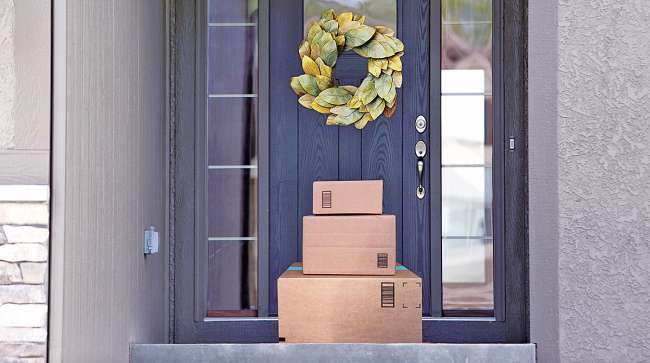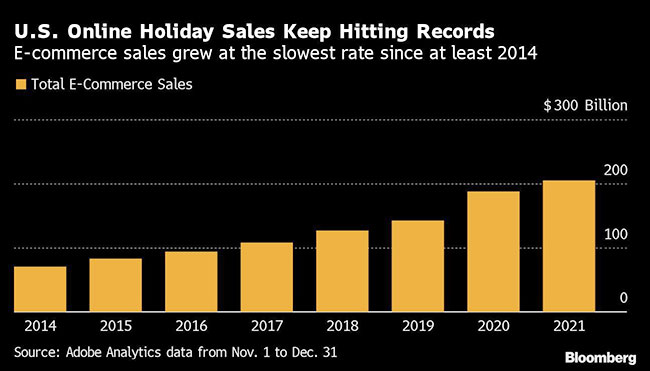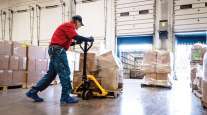Bloomberg News
US Online Holiday Spending Grows at Slowest Rate in Seven Years

[Stay on top of transportation news: Get TTNews in your inbox.]
Online shopping for holiday gifts last year in the U.S. grew at the slowest rate since at least 2014, according to Adobe Analytics, after a blowout year in 2020.
Consumers spent a record $204.5 billion on e-commerce from Nov. 1 to Dec. 31, an 8.6% increase from the prior-year period, Adobe said. Growth slowed from prior years amid decreased popularity of major shopping days such as Black Friday and Cyber Monday, fewer discounts on key gift categories, and the emergence of the omicron variant that sickened workers and upended some holiday gatherings.
Supply chain snarls and cargo delays also hurt some retailers’ inventories. Adobe tracked 6 billion out-of-stock messages online during the shopping season, a 10% increase from the prior year and up threefold from 2019.

“When we see these shortages happen which start to ripple online, availability becomes less across the board and choices become less,” said Vivek Pandya, senior digital insights manager at Adobe. “If you have less choice, then the price will tick up.”
Online holiday spending grew at least 13% in each of the six shopping seasons prior to the last one, including a 32% year-over-year jump in 2020, according to Adobe. Total e-commerce spending was just $70.1 billion in 2014, the earliest data provided by the company.
“The growth that we were able to build on to last season really helped kind of showcase that there’s definitely entrenched behaviors in terms of online spend,” Pandya said.

New year, new resilience. Host Mike Freeze and reporters Connor Wolf and Eugene Mulero uncover the lessons 2020 and 2021 taught trucking's business leaders and consider business and legislative solutions in the year ahead. Hear a snippet above, and get the full program by going to RoadSigns.TTNews.com.
Last year’s deals were less compelling than in prior years. For example, electronics were discounted 8% compared with 21% in 2020. Computer prices were down 10% versus 22% the year before. One exception was for apparel and toys, in which discounts were better than they were in 2020.
Adobe on Jan. 12 also released inflation data that showed online prices increased 3.1% in December, the 19th consecutive month of year-over-year increases. That’s still much lower than the overall level of consumer price inflation in the U.S.
“As consumers contend with higher offline prices for everything from gas to rent, they are finding that e-commerce is still a less expensive option when it comes to goods like toys, electronics and even jewelry,” Patrick Brown, Adobe’s vice president of growth marketing and insights, said in a statement.
Want more news? Listen to today's daily briefing below or go here for more info:



